Everything you need to know about sourdough hydration – what it is, how to calculate it, and what hydration is best for you! It’s not as complicated as you may think.
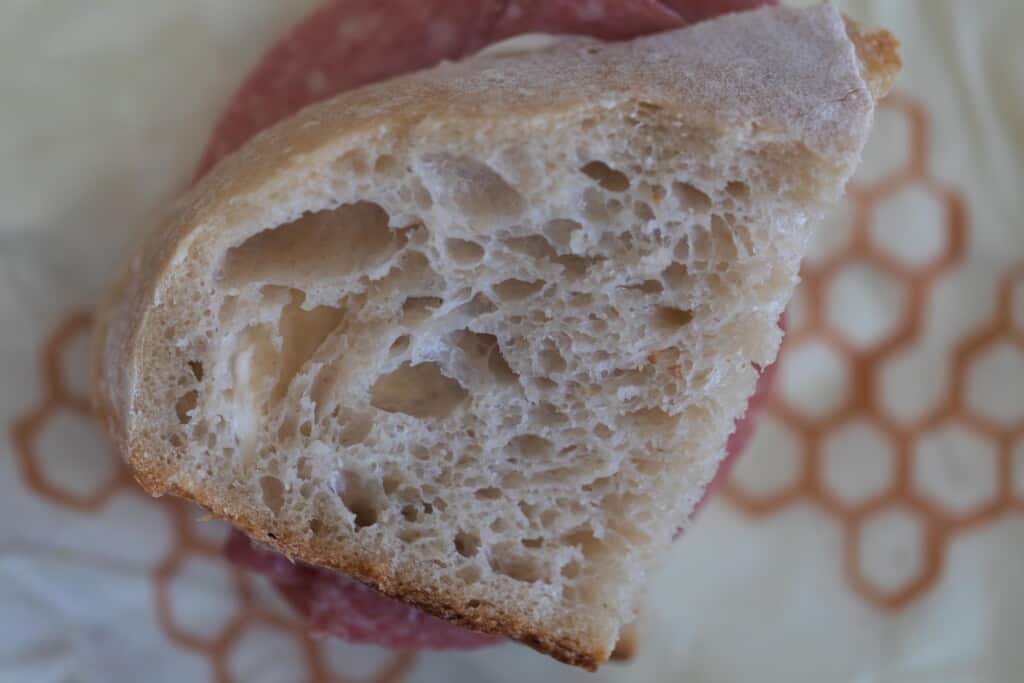
Table of Contents
- What Does Sourdough Hydration Mean?
- Sourdough Starter Hydration
- How to Calculate Hydration
- High Hydration Sourdough
- High Hydration Sourdough Tips
- Low Hydration Sourdough
- Sourdough Hydration for Beginners
- FAQ
- My Favorite Tools For Sourdough Baking
- New to Sourdough?
- More Sourdough How-Tos
- Some of My Favorite Sourdough Bread Recipes
When I create my various sourdough recipes, I always strive to keep it simple.
After all, making delicious sourdough bread shouldn’t have to be complicated or intimidating. It can seem that way, though, when you read the countless blogs or watch videos of professional bakers discussing things like autolyse, bulk fermentation, and, of course, the hydration of their dough.
I’ll let you in on a little secret. I had no idea what sourdough hydration was when I started baking bread with my starter. I simply dived in and tried to convert my regular yeast recipes to sourdough.
With a little practice, I was able to get beautiful loaves, even without being fluent in the sourdough jargon.
So, no, you don’t have to understand hydration to end up with a sourdough loaf you and your family can enjoy.
However, understanding hydration may help you troubleshoot if your loaves are not turning out exactly how you envisioned.
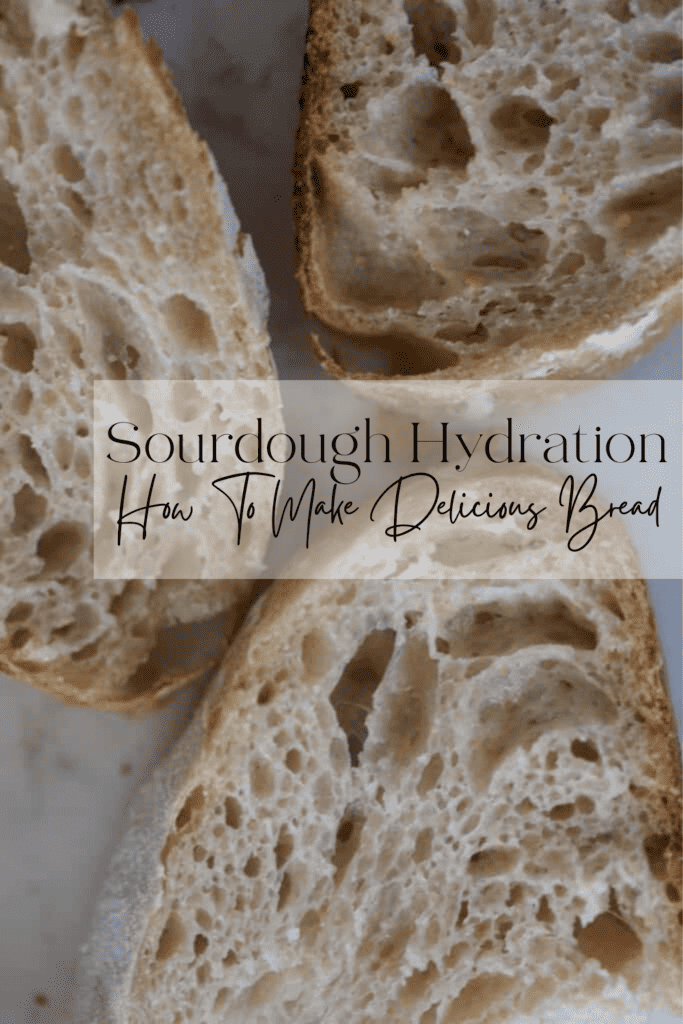
What Does Sourdough Hydration Mean?
Sourdough hydration refers to the water-flour ratio of a recipe and is represented by a percentage. In other words, it is all about how much water is in your dough.
Why does this matter? The level of hydration will affect your final product, especially the texture. Enjoy an open crumb? You’ll want to use a higher hydration dough.
I prefer my loaves to be around 70% hydration, but sourdough recipes can range anywhere from 60% to 90%. In fact, you can even make a 100% hydration dough. Anything above 80% is considered high, while anything below 70% is a lower hydration dough.
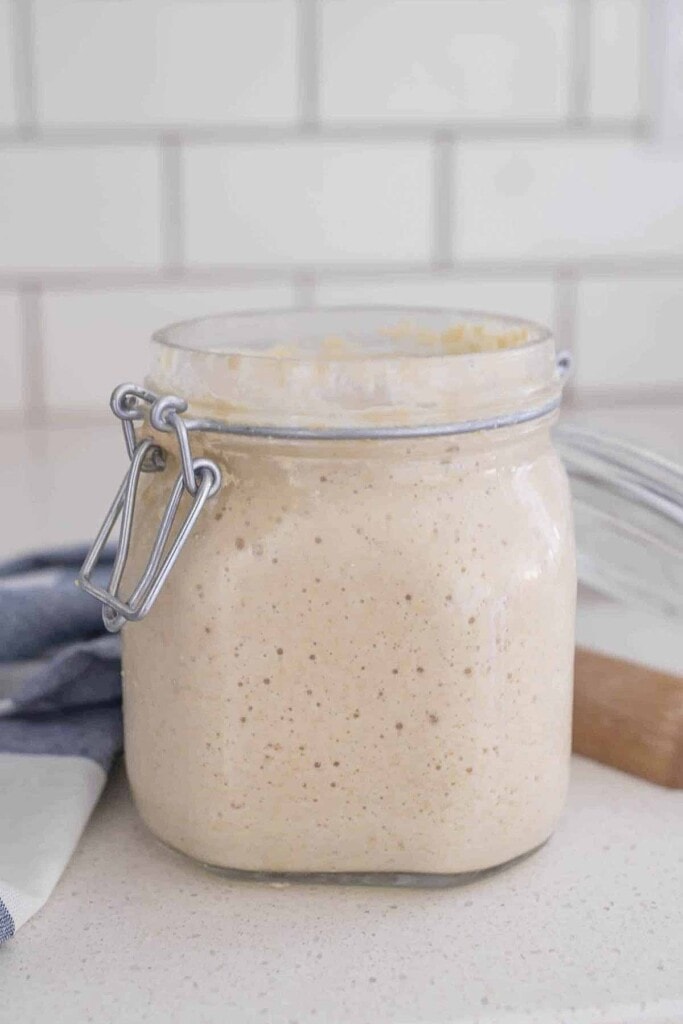
Sourdough Starter Hydration
There are also different types of hydration for your sourdough starter. It’s important to know what type of starter you are using to calculate the over all hydration of a recipe.
The most common type is 100% hydration starter. This is what I use. It simply means you feed it equal parts water and flour. Learn how to make your own 100% hydration starter here.
If your starter is above 65%, it is a liquid starter. Any starter that is at or below 65% is considered a stiff starter.
A stiff starter is a very thick and can be easier to maintain because you typically do not need to feed it as often. However, it can be difficult to incorporate into your dough since it is so thick.
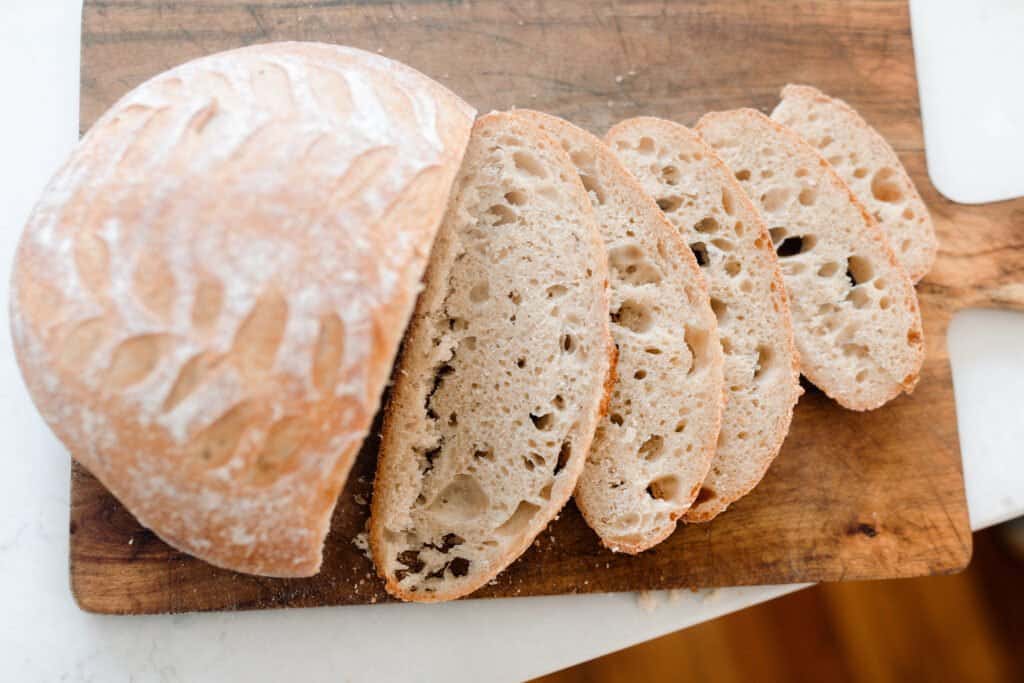
How to Calculate Hydration
Where do bakers get this calculation?
It’s simple baker’s math. Take the amount of water and divide by the amount of flour. Then multiply that number by 100. That gives you your hydration percentage.
Don’t forget! Your starter is also made up of flour and water, so it must be included in your calculation, too.
Using my No Knead Sourdough Bread as an example, here is how you would calculate its hydration:
Step 1: Calculate the amount of flour and water in your starter.
The typical sourdough starter is at 100% hydration, meaning it is equal parts flour and water. I use 200 grams of starter in my no knead recipe. That means I’ll add 100 grams to my total flour count and 100 grams to my water.
Step 2: Add up the total weight of water.
I use 650 grams of water, plus the 100 grams from my starter. That gives me a total of 750 grams.
Step 3: Add up the total weight of flour.
I use 500 grams of unbleached all purpose flour, 200 grams whole wheat flour, and 250 grams bread flour. That added together, plus the extra 100 grams from the starter, is 1,050 grams.
Step 4: Divide the grams of water by the grams of flour and multiply by 100.
750 divided by 1,050 equals .714. Multiply that by 100 and you get 71%.
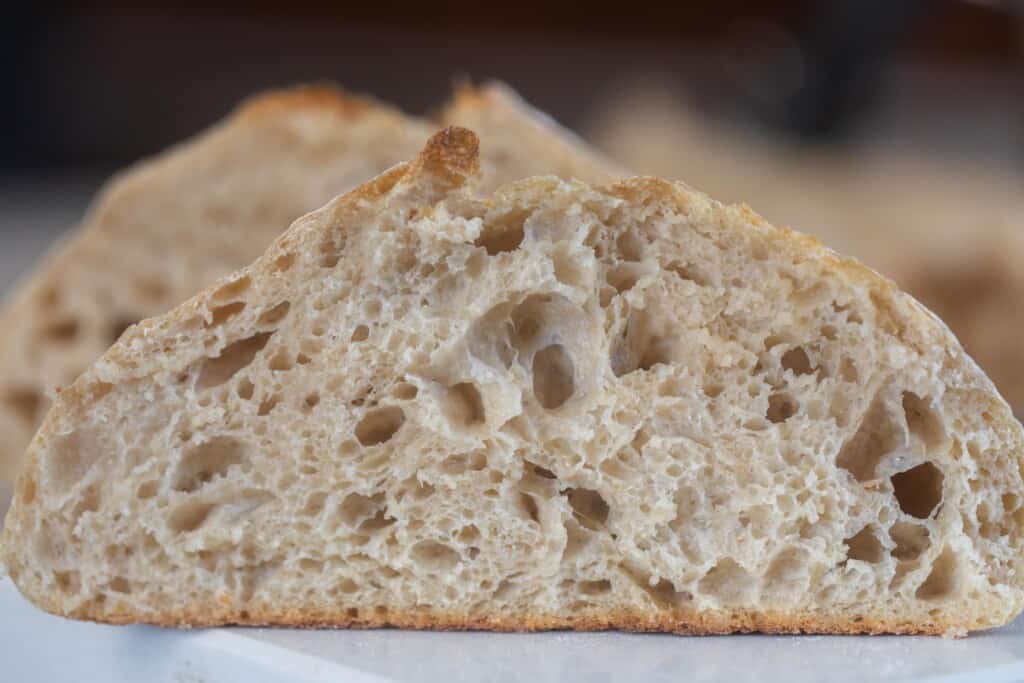
High Hydration Sourdough
Anything above 80% is considered high hydration. You can find my high hydration sourdough bread recipe here.
The Pros of High Hydration
The main reason bakers choose high-hydration doughs is to generate a more open crumb. If you are having trouble getting your sourdough to have those classic holes, you may want to try a new recipe with more water.
In addition to an airy crumb, you also may end up with a thinner crust.
I’ve also read that some people find higher hydration doughs are less sour than low hydration doughs. I personally have not found this to necessarily be true. If there is a difference in flavor, it is very subtle.
The Cons of High Hydration
Higher hydration doughs are much more difficult to work with. If you are just starting out, you may want to begin with a lower hydration dough and slowly work your way up.
This post contains affiliate links, which means I make a small commission at no extra cost to you. See my full disclosure here.
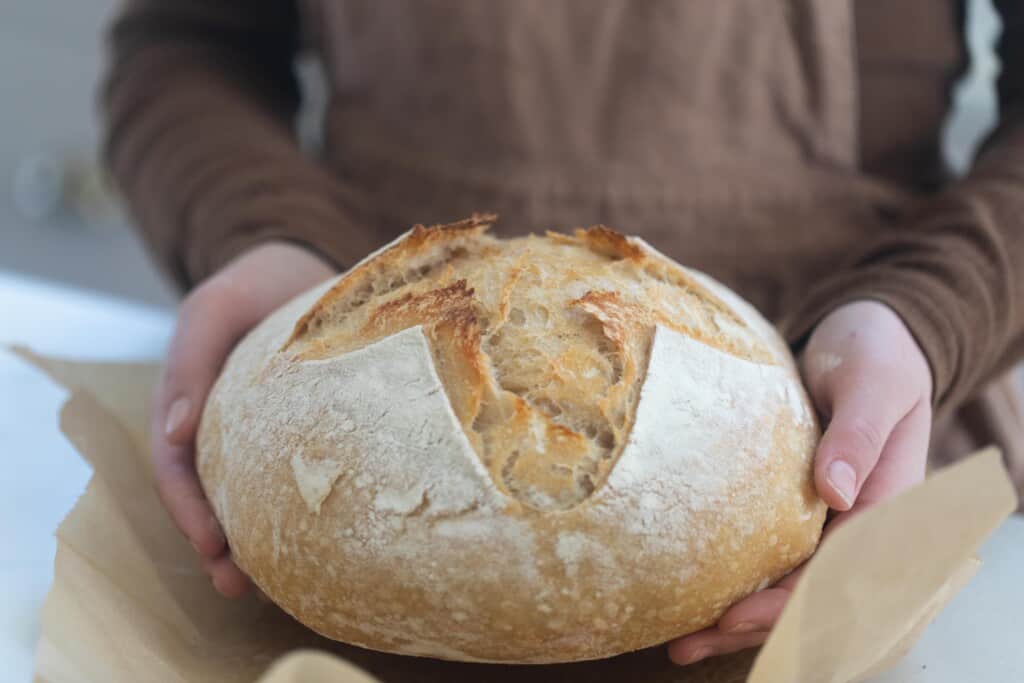
High Hydration Sourdough Tips
- Watch your dough closely during bulk fermentation. Higher hydration doughs tend to ferment faster. Over fermented dough will become sticky and unworkable. The amount of time it takes for your dough to proof depends on many factors, including the maturity of your starter and environment.
- Be gentle when dealing with high hydration dough after the bulk ferment and during shaping to make the crumb more open and even. Using a bench scraper can help move your dough more gently.
- This is a wetter dough, so if you find it too sticky to work with, wet hands may help.
- The type of flour you use matters! In my high hydration recipe, I use bread and whole wheat flours in addition to all purpose. Both the bread and whole wheat flours have a higher protein content, allowing them to absorb more of the water.
- You may find using the coil fold method instead of stretch folds is easier for this dough. I personally still like my stretch and folds and use them in my recipe here.
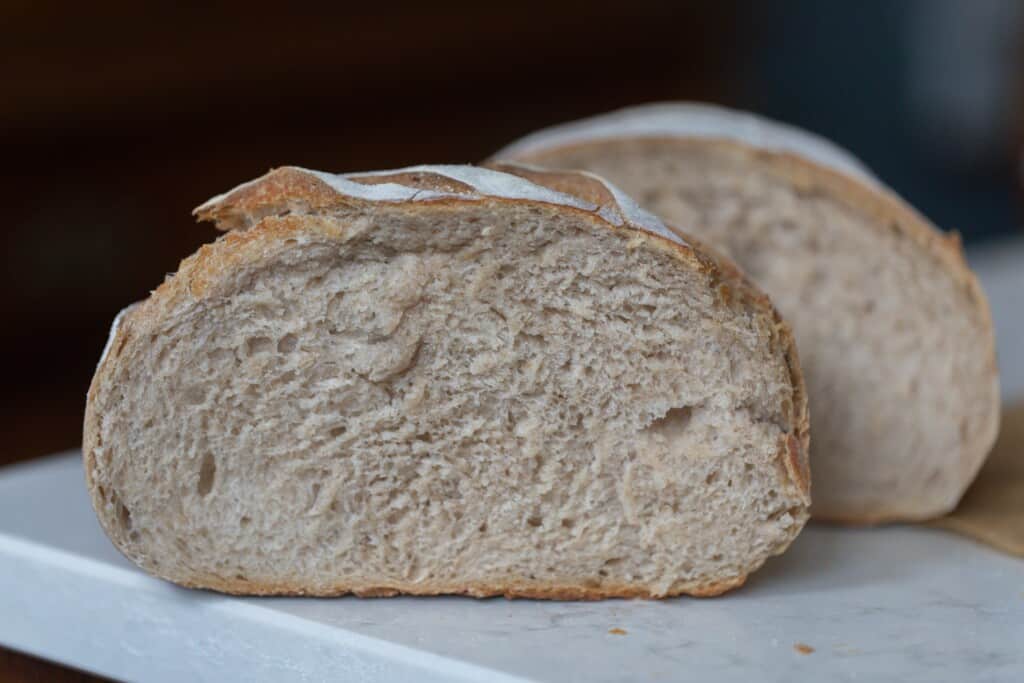
Low Hydration Sourdough
Typically any recipe below 70% is considered low hydration. I’ll be posting a low hydration recipe soon!
The Pros of Low Hydration
A dough with a lower hydration level is going to be much easier to work with because it is not as wet and sticky.
If you are just beginning to bake sourdough, a lower hydration dough may be the best to start with. You can always work your way up gradually once you get the hang of it.
The Cons of Low Hydration
The lower the hydration, the tighter your crumb and more dense your loaf will be. This means you won’t have as many of those airy holes that are a signature of sourdough.
This isn’t always a bad thing, though. These type of loaves may work better for sandwiches or toppings. It’s really all about personal preference. A low hydration sourdough loaf is still sourdough and will still be delicious!
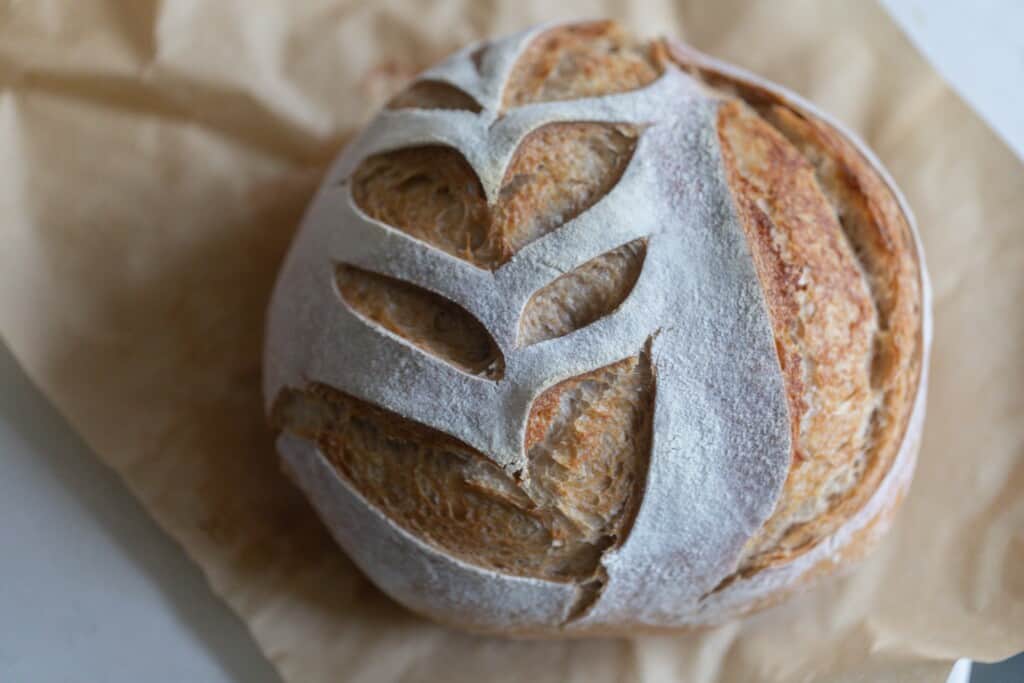
Low Hydration Sourdough Tips
- The lower hydration of your dough, the longer the bulk fermentation will take. Ideally, your dough will double in size and have bubbles on top. The time will vary depending on the exact hydration of the dough, the maturity of your starter, and environment (temperature, altitude, humidity, etc.).
- If your dough is coming out extra dense, it may be due to under fermentation. Remember, low hydration doughs will be denser with a tighter crumb. So, you may need to simply increase the hydration of your dough.
- Be careful not to over ferment your dough. You’ll know if it is over fermented because it will be a wet soupy mess and impossible to shape.
- I like to keep my starter at 100% hydration regardless of the type of dough I’m making. This means it is fed equal parts water and flour. Learn how to make a starter from scratch here and how to maintain it here.
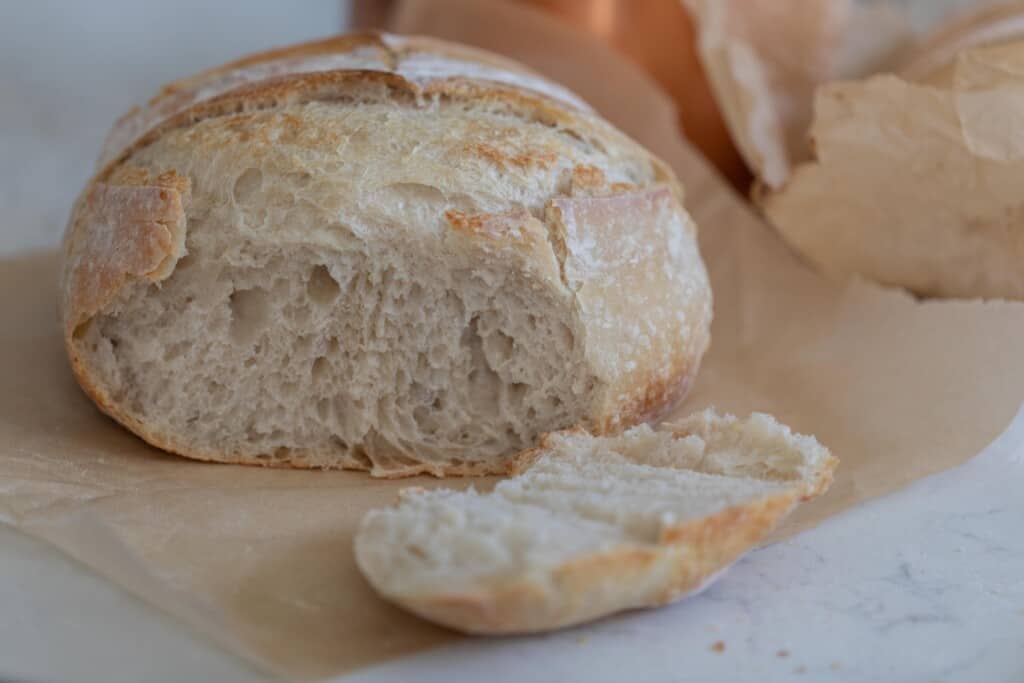
Sourdough Hydration for Beginners
Higher hydration loaves tend to attract advanced bakers who are looking for a challenge. If you are just starting out, you will likely want to start with something more in the 65 – 75% range.
My Beginner’s Sourdough Bread is 74% hydration. It’s a great middle ground, perfect for a first time bake. It’s not too sticky of a dough to work with, yet it still yields a beautiful crumb that is airy and not too tight.
FAQ
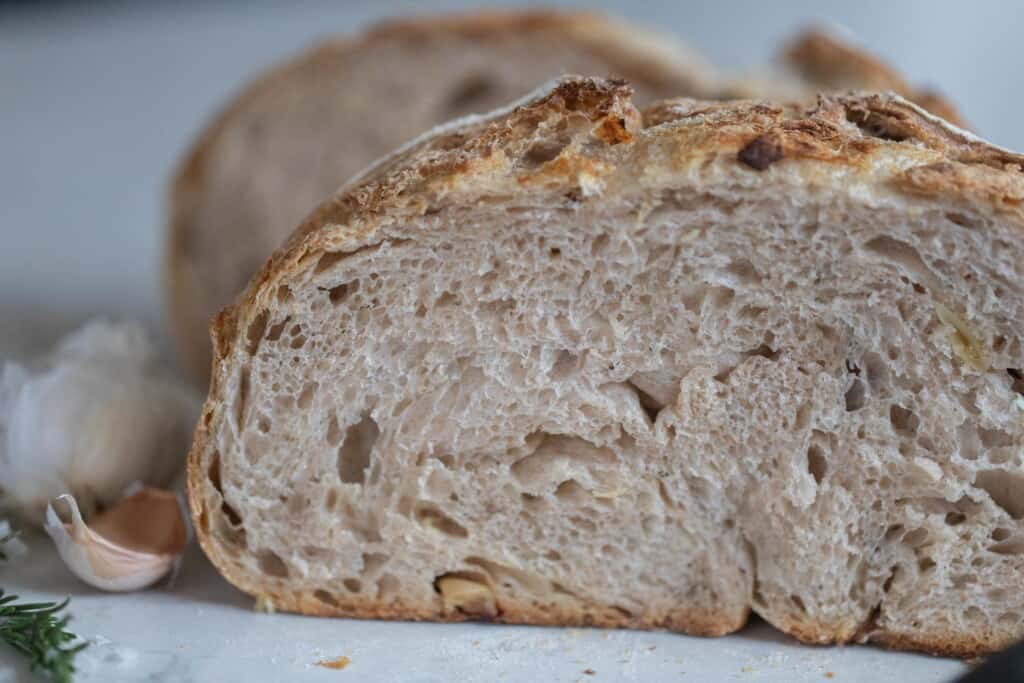
What is a good hydration for sourdough bread?
It’s really a personal preference as to what hydration level is best for you and depends on your ultimate goal. No matter the hydration level, it’s still sourdough.
So, that means it will be delicious at 65%, 85% or anything in between. Personally, I prefer to bake with about 70% hydration.
What does high hydration sourdough look like?
High hydration sourdough has a more open crumb. That means you’ll get the big holes that sourdough is known for. Not everyone loves a more open crumb, so it is really personal preference as to whether high hydration is better or not.
Is 70 high hydration sourdough?
No. Anything above 80% is considered high hydration. I typically prefer my loaves to be in the 70 – 75% range. It’s a great middle ground. You still end up with a beautiful crumb, but the dough is not quite as temperamental.
What is the point of high hydration sourdough?
Bakers chose to bake higher hydration sourdough bread to achieve a certain texture. The more water, the more of an airy, open crumb you will get.
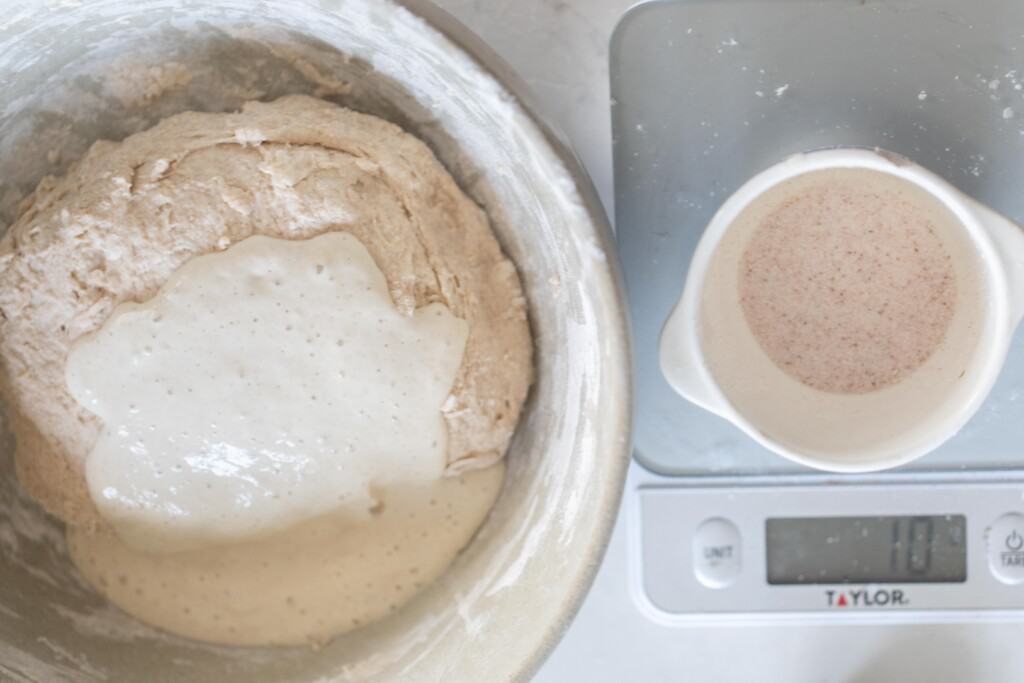
My Favorite Tools For Sourdough Baking
Dough Whisk
Dutch Oven – Not ready to invest in a cast iron Dutch oven? Learn how to make sourdough bread without one here.
Kitchen Scale
Proofing Set – This includes a banneton basket, scoring lame, and bench scraper. It’s a great gift for the new sourdough baker in your life, too.
New to Sourdough?
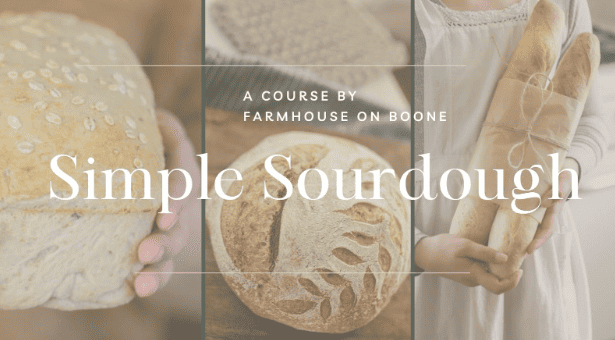
I believe anyone can make beautiful artisan sourdough loaves with a little practice. It really doesn’t have to be complicated.
That’s why I created a course covering everything from creating a sourdough starter to more advanced techniques. Plus, it includes my complete recipe book – that’s over 130 recipes!
I’ll be your guide as you jump into the wonderful world of sourdough! You’ll also be invited to join my private Facebook group for members only. It’s a great place to ask questions and find inspiration from fellow bakers.
Learn more about Simple Sourdough here.
More Sourdough How-Tos
- How to Make a Sourdough Starter
- Maintaining and Feeding Your Sourdough Starter
- How to Freeze Sourdough Bread
- How to Store Sourdough Bread
- How to Cut Sourdough Bread for the Perfect Slice
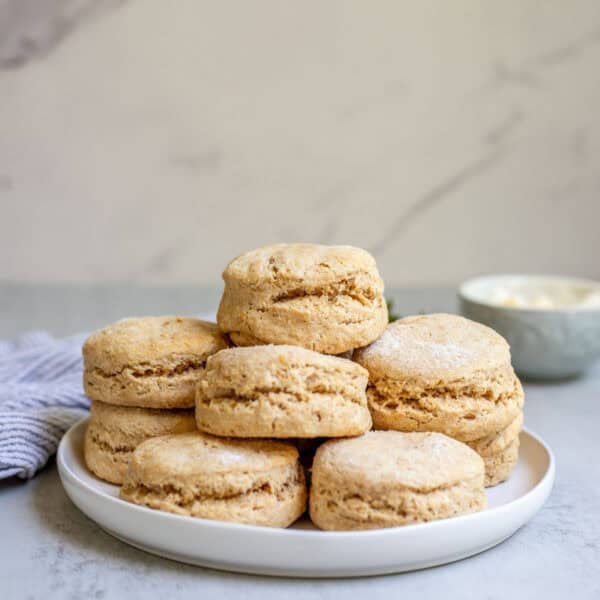
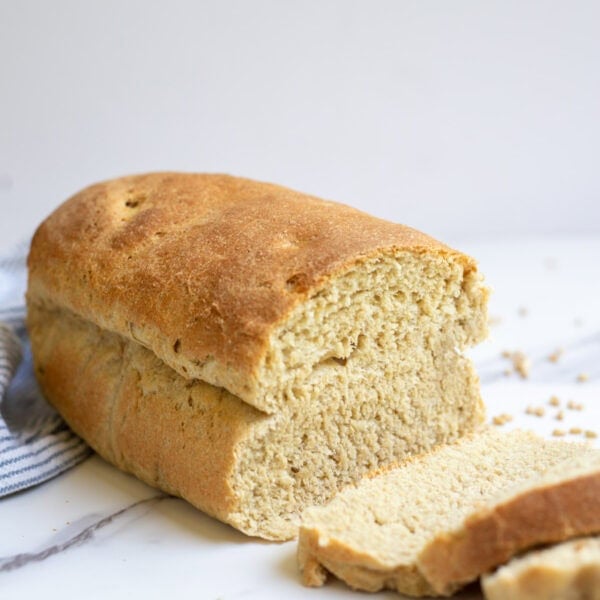
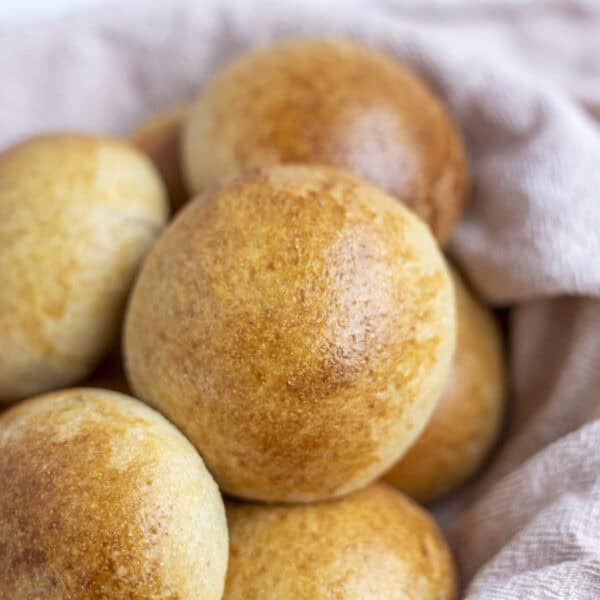
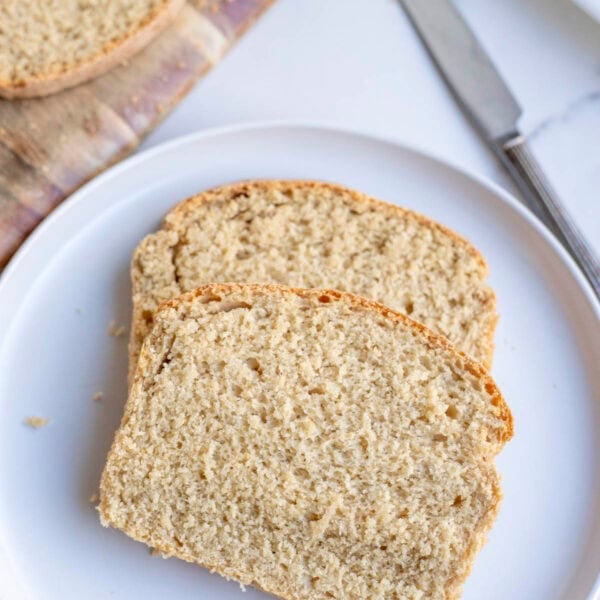






Where do you find your course covering everything. I’m new to this. I’m eager to learn. But I do work a full time job. So trying to fit all of this in. Love everything you do. Thanks Angie
You can find the course here: https://create-your-blog-dream.teachable.com/p/simple-sourdough You can totally make sourdough work for you with little time!
Thank you for the great hydration article. I personally like to make ssndwich bread,so I prefer my hydration to be about 62%. This way I don’t have many big holes in my toast. This is another article that is going into my archive of sourdough tips. Thanks
This was very helpful. I was wondering why my loaves were so dense. All of the other articles I’ve read seemed to skip this… I am very new to baking sourdough bread I just cooked my 3rd loaf, my first loaf was so dense and hard all I could think is Ellie May Clampet has got competition! 😅 after more reading the next 2 loads were better. But now I have something else to strive for. Thank you
You’re welcome!
Thank you for the formula. That’s crazy math, not like common core math that is taught nowadays. That’s like home school math or math from 1978 or older. Thank you for all you recipes and ideas always fun to read and put on my list of things to do.
Hahah that made me chuckle! Glad you enjoy the recipes.